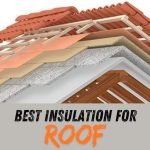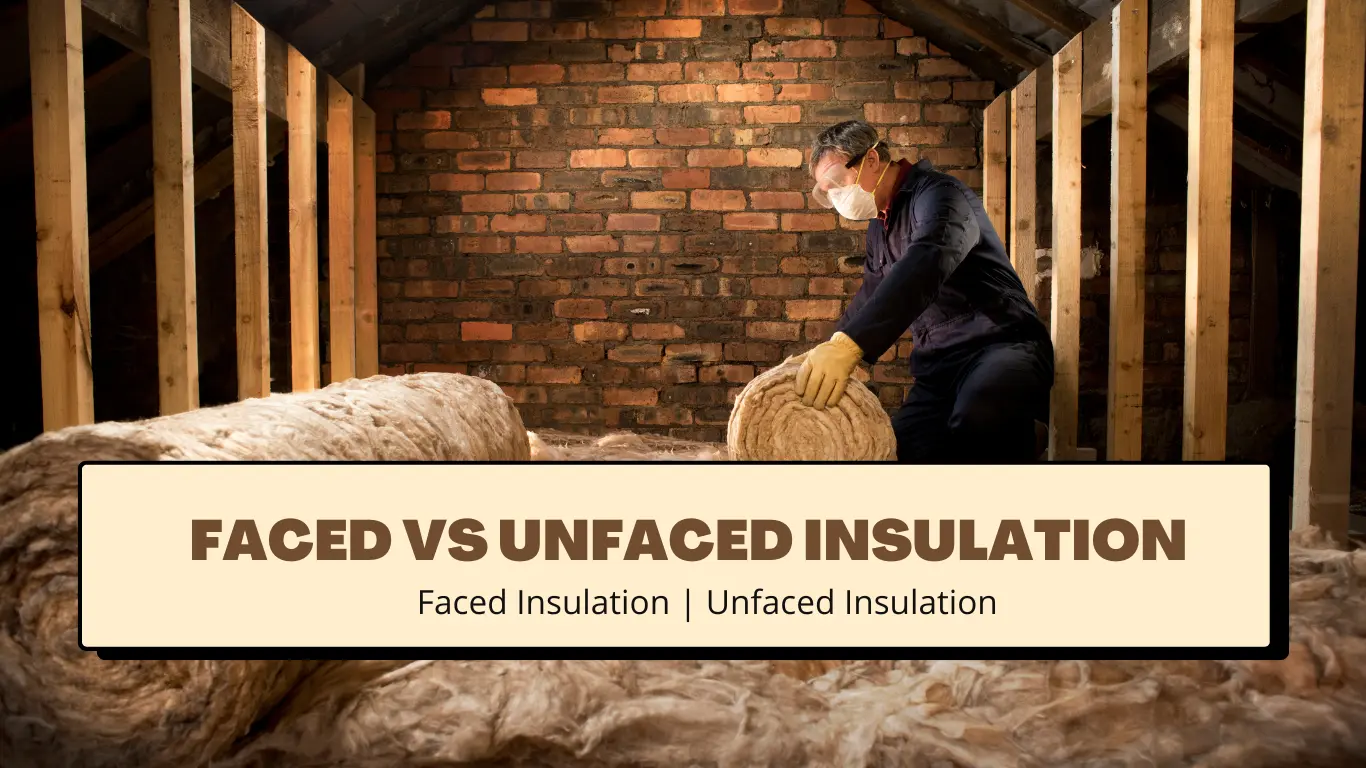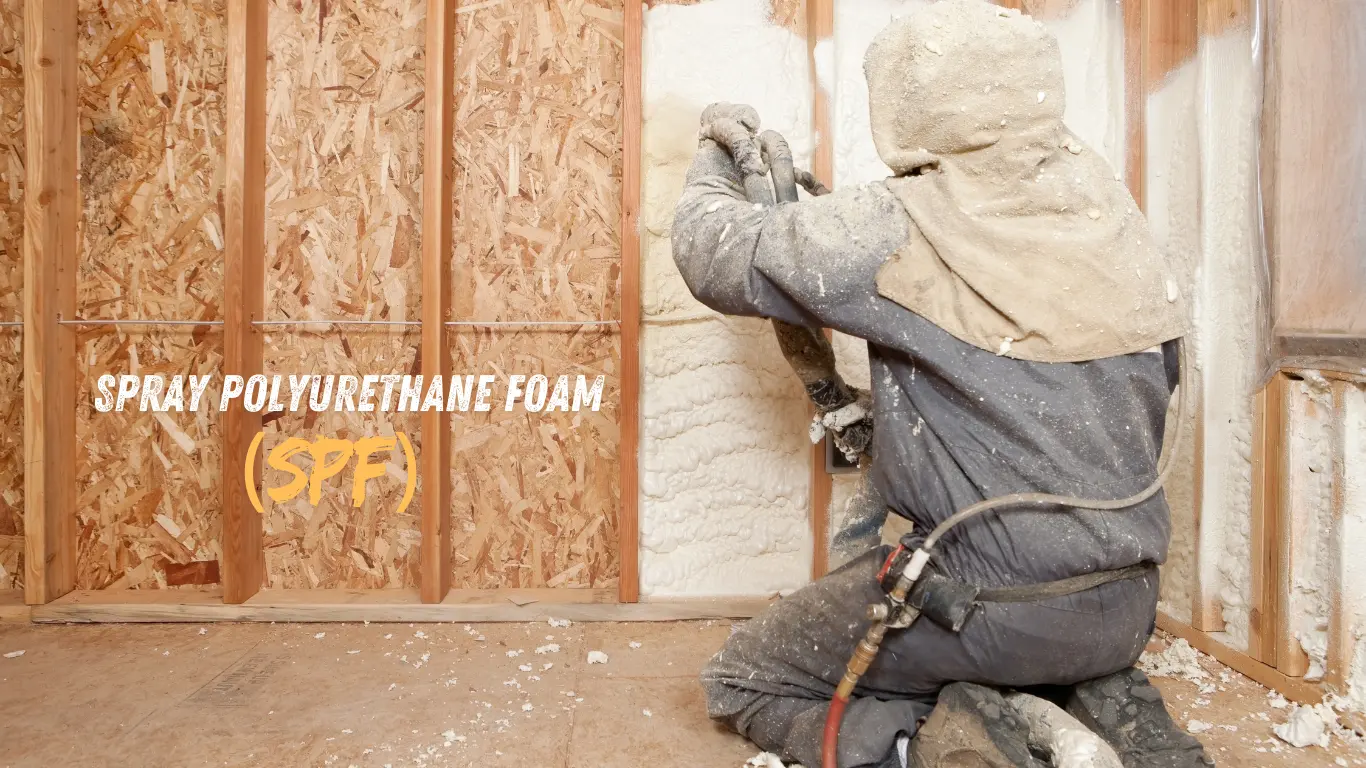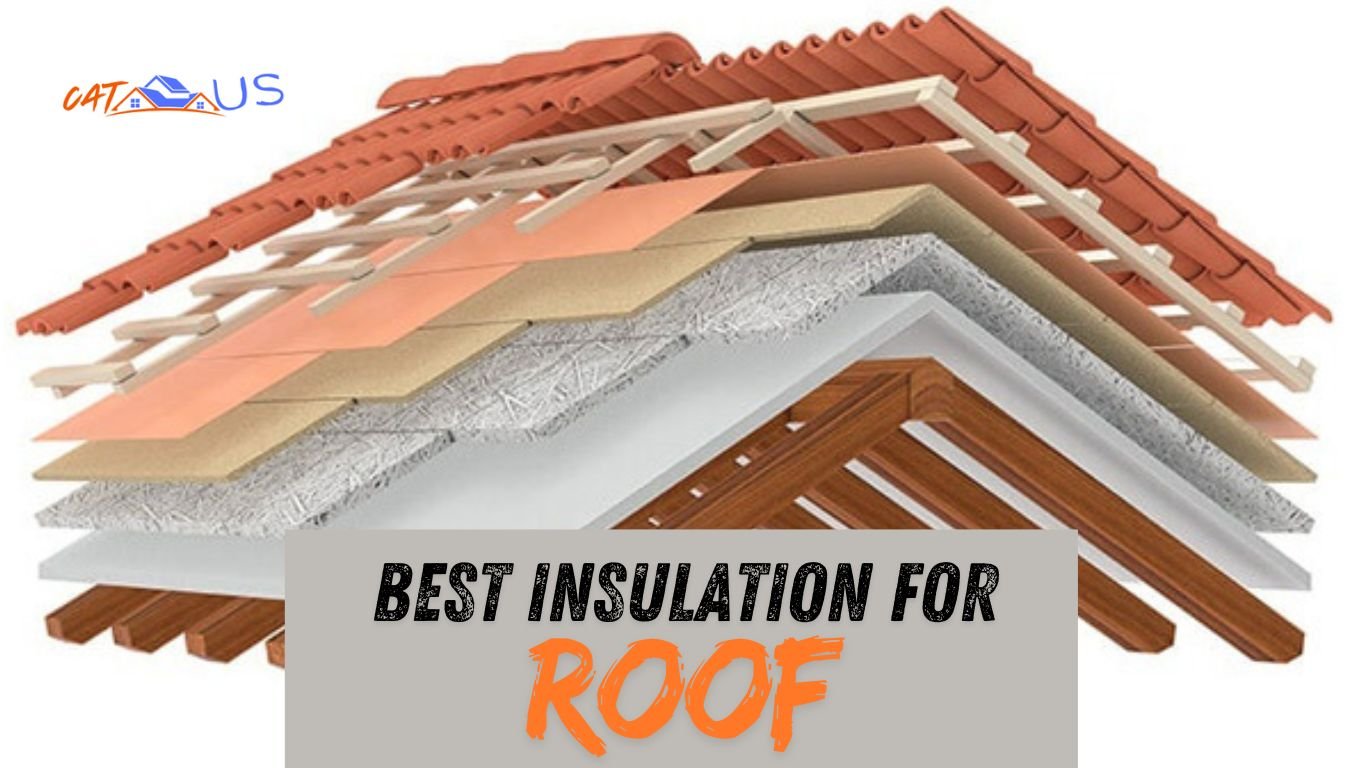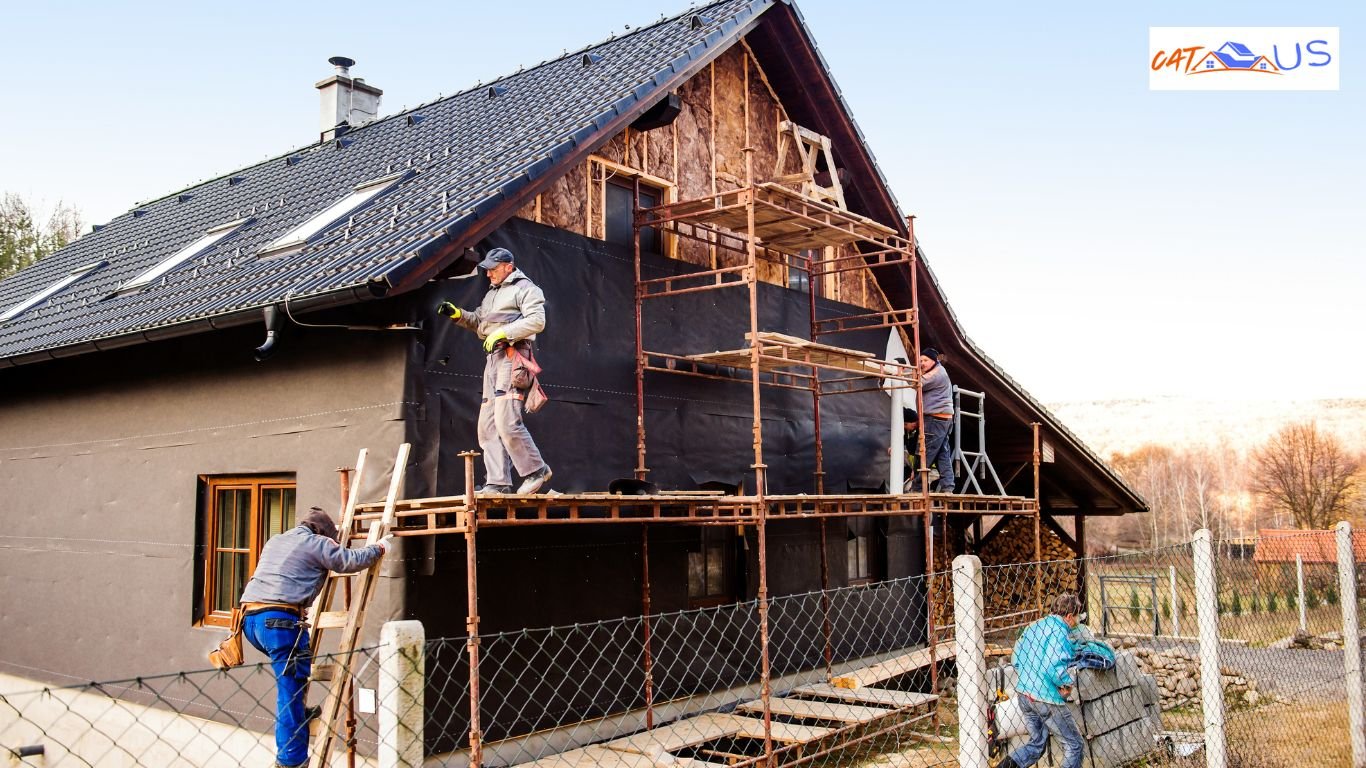Proper attic insulation is essential because it keeps your home comfortable year-round, no matter the season. It ensures warmth in winter and coolness in summer by preventing heat transfer between your attic and other rooms.
Plus, knowing the average cost of insulating your attic per square foot can help you plan an energy-efficient upgrade within your budget.
From my experience, a properly insulated attic makes a noticeable difference, especially during cold, snowy winters, when maintaining the temperature inside can be challenging.
By understanding how insulation costs vary per square foot, you can choose the right material and type to create a cozy space while also lowering your energy bill.
What Is The Best Insulation Material For An Attic?
With so many different types of insulation available, choosing the best option can feel challenging. However, once you know the factors—like the size of your attic, your region’s climate, and the proper material—it becomes easier to determine what’s necessary.
A well-insulated attic not only improves your home’s efficiency but also brings long-term benefits by keeping unwanted heat out and adequate warmth in.
1. Cellulose Insulation: A Reliable and Green Solution
Cellulose insulation is a popular choice for its excellent thermal performance and eco-friendly composition, especially in regions like Wisconsin. Made from recycled paper, it seals cracks and crevices effectively, providing optimal coverage and reducing air leaks.
With an R-value between R-3.1 and R-3.8 per inch, it cuts down on energy costs and minimizes noise transmission. While its sound-dampening properties and ability to perform well in cold winters and hot summers are noteworthy, its tendency to settle and its susceptibility to moisture mean professional installation is often necessary.
Treated with boric acid for fire resistance, this insulation requires care during application due to dust and the need for an acrylic binder to prevent R-value loss.
Pros and Cons of Cellulose Insulation
👉 PROS
Made from recycled materials, it is a green product that is eco-friendly.
Inexpensive and typically 25% cheaper than fiberglass insulation.
Provides effective insulation in the attic and fits well in tight spaces.
Treated with anti-flammable chemicals, ensuring better safety against fire hazards.
😟 CONS
Flammable by nature and depends heavily on chemicals for fire resistance.
Susceptible to moisture, becoming wet easily and leading to mold, mildew, and rotting.
Creates significant dust during installation, requiring respiratory masks and goggles for safety.
Can sag and settle over time, reducing its effectiveness in walls and attics.
2. Spray Foam Insulation: Durable and Efficient
Spray foam insulation is a top choice for attics in Wisconsin, known for its varied climate. It offers excellent thermal performance and air sealing, making it highly effective against extreme weather.
Closed-cell spray foam, with an R-value between R-6 and R-7 per inch, is particularly efficient, as it expands to fill gaps and cracks completely. Although it is more expensive, ranging from $0.50 to $7 per square foot, its ability to resist moisture, mold, and pests ensures long-term benefits for your attic.
This type of insulation is sprayed directly onto attic surfaces, creating a continuous, airtight layer that fits irregular shapes and cavities. Its properties enhance the attic’s structural integrity while boosting energy efficiency.
While professional installation is recommended due to potential health and environmental concerns, its ability to seal gaps and maintain insulation over time makes it a valuable investment.
Pros and Cons of Spray Foam Insulation
👉 PROS
Spray foam insulation effectively seals gaps and cracks, creating an airtight layer.
It can fit into irregular shapes and cavities, making it ideal for complex attic layouts.
Offers structural strength while improving heat resistance and energy efficiency.
Open-cell is more affordable, while closed-cell provides superior moisture resistance.
😟 CONS
Requires professional installation due to the expanding and hardening process.
Can be challenging to modify or remove once it becomes a solid foam.
May present issues in attics with significant obstructions or unconventional designs.
Installation costs can be high, especially with closed-cell spray foam.
3. Fiberglass Insulation: Affordable and Effective
Fiberglass insulation is a staple in home construction and renovations, especially in areas like Wisconsin. It is cheap, accessible, and highly sought after for its ability to resist moisture and provide good thermal and noise insulation.
With an R-value ranging from R-2.2 to R-4.3 per inch, it is cost-effective, priced between $0.30 to $1.50 per square foot, and available in batt or blown-in forms. While DIY installation is an option, professional installation ensures optimal performance by minimizing air leaks and avoiding improper setups.
Fiberglass doesn’t shrink over time and is fire-resistant, making it a durable choice for areas with high humidity. However, it may settle over time, reducing its effectiveness, and improper installation can leave air leaks or gaps.
Despite these drawbacks, it remains a reliable material, with the added benefit of being unappealing to insects, which helps maintain its structure over the years. Its versatility makes it a go-to option for both Extreme Home Makeover-style projects and everyday attic upgrades.
Pros and Cons of Fiberglass Insulation
👉 PROS
Fiberglass insulation is affordable and a common choice for attics in Wisconsin’s climate.
Offers a decent R-value ranging from 2.2 to 4.3, especially in high-density forms.
Remains a popular insulation type due to its widespread availability.
😟 CONS
May leave gaps, reducing its effectiveness over time.
Performs the worst in terms of insulation compared to cellulose or spray foam.
Not ideal for attics needing superior thermal or airtight properties.
4. Polyisocyanurate (Polyiso) Insulation: A Versatile and Durable Option
Polyiso insulation is a high-performing solution with an R-value of R-5.5 to R-6.5 per inch, making it a top choice for Wisconsin’s roofing and wall applications. Its thermal efficiency, moisture resistance, and long lifespan make it a durable option for attics.
This rigid foam provides strong thermal performance and is effective at regulating indoor temperatures, even in challenging climates. While it can be expensive and harder to fit into uniquely shaped areas, its versatility and durability often justify the investment.
From personal experience, Polyiso insulation works exceptionally well in maintaining energy efficiency and creating a comfortable indoor environment. Its lightweight nature and ease of cutting simplify installation, though professional help is often required for effective application.
It’s perfect for homeowners looking for insulation with a high R-value, as it saves space while offering excellent protection against moisture and heat. Despite its cost, this material stands out as a reliable option for both performance and longevity.
Pros and Cons of Polyiso Insulation
👉 PROS
Offers excellent fire resistance by forming a protective layer under high heat.
Lightweight and easy to cut and install, making it convenient for various applications.
High R-value per inch ensures efficient insulation in less space.
😟 CONS
R-value decreases significantly below 50 degrees, making it less effective in cold climates.
Prone to moisture absorption, which can affect its performance in wet conditions.
Foil facers may act as an unwanted vapor barrier, complicating some installations.
5. Batt Insulation: Easy to Install and Versatile
Batt insulation is a popular choice, often packaged as rolled-up sheets made from fiberglass, mineral wool, or even denim. These sheets feature interweaving fibers held together by adhesive binders and come with a paper or reflective foil backing that acts as a vapor barrier.
Batts work best in expansive attic areas with minimal obstructions, plenty of headroom, and evenly spaced joists or structural wooden rods. Ideal for attics with open spaces, this type of insulation is easy for an installer to maneuver and ensures excellent thermal performance, especially in areas with no prior insulation.
Pros and Cons of Batt Insulation Replacement
👉 PROS
Replacing batt insulation can improve thermal performance and address issues caused by old or damaged material.
Professional attic services ensure proper removal and installation for better efficiency.
😟 CONS
Requires you to contact a professional, which can increase the overall cost of the job.
Improper handling during removal can lead to material damage or air quality concerns.
6. Reflective Foil Insulation: An Efficient Solution for Hot Climates
Reflective foil insulation is a highly effective option for Wisconsin summers, as it reflects radiant heat, helping to keep attics cooler. Priced between $0.25 and $2.50 per square foot, it’s a lightweight and thin material that is easy to install, even in tight spaces.
With an R-value of R-1 to R-6 per inch, it works by blocking up to 97% of heat transfer, significantly reducing the load on air conditioning systems. Its vapor barrier properties make it suitable for humid environments, and it can last over 50 years with proper installation.
However, reflective foil insulation is less effective in cold climates, as it primarily addresses radiant heat rather than overall thermal insulation.
While its metallic facing can sometimes pose electrical hazards, and dust accumulation might reduce efficiency over time, its ability to support mold prevention and enhance energy savings makes it a reliable choice when paired with other insulation materials for more comprehensive coverage.
Pros and Cons of Reflective Foil Insulation
👉 PROS
Reflective foil insulation effectively deflects radiant heat, keeping attics cooler in hot climates.
It is suitable for specific applications and works best when used along with other materials.
😟 CONS
Does not provide comprehensive insulation, especially in Wisconsin’s weather extremes.
Limited to specific applications, making it less versatile for standalone use.
7. Rigid Foam Insulation: Durable and Energy Efficient
Rigid foam insulation, including XPS and EPS, offers high thermal performance with R-values between R-5 and R-7 per inch, effectively reducing heat transfer in homes.
Priced from $0.60 to $2 per square foot, it provides continuous insulation that minimizes thermal bridging while being moisture-resistant and adding structural strength.
Though challenging to install in tight spaces or around obstructions, its durability, versatility, and long-term reliability make it a worthwhile solution for various areas, even with its higher initial cost.
Pros and Cons of Rigid Foam Insulation
👉 PROS
Moisture-resistant and creates an airtight barrier, making it ideal for energy efficiency.
Delivers excellent thermal performance and is highly effective for homes.
😟 CONS
Can be expensive, increasing the overall cost of insulation projects.
8. Mineral Wool Insulation: A Safe and Durable Solution
Mineral wool insulation is a durable choice known for its fire resistance, thermal efficiency, and ability to block outside noise. With an R-value between R-3.5 and R-4.5 per inch, it offers excellent sound insulation and remains resistant to mold and pests.
Priced at $1.40 to $4 per square foot, it is costlier but delivers long-lasting performance and safety benefits. Made from melted-down stone and recycled slag from steel mills, this insulation is widely used in Canada and Europe, with a growing resurgence in the US.
One of its greatest advantages is its role as a fire barrier, as it doesn’t burn until reaching 1,800 degrees Fahrenheit. In a worst-case scenario, this provides crucial extra minutes for the fire department to arrive and protect the house.
Additionally, it is water-resistant, maintaining its insulating properties even during a moisture leak, and remains extremely effective at creating a quieter home environment. Though harder to install, mineral wool’s safety and performance make it a top-tier insulation option for attics.
Pros and Cons of Mineral Wool Insulation
👉 PROS
Provides effective fire resistance and superior sound insulation, absorbing noise efficiently.
Moisture resistance ensures it maintains insulating properties even when wet.
😟 CONS
Challenging installation around obstructions and in tight spaces.
Higher initial cost and increased energy consumption during manufacturing contribute to a larger carbon footprint.
9. Cotton or Denim Insulation: A Safer, Sustainable Choice
If you’re looking for an eco-friendly way to insulate your attic, cotton insulation made from recycled blue jeans is a viable choice. Its high performance stems from a typical R-Value of 3.7, which means it traps heat efficiently.
Unlike fiberglass or mineral wool, this type of insulation minimizes safety hazards during handling and installation, as it doesn’t release irritating fibers into the air. This makes it safer to handle without worries about skin or breathing issues.
Although slightly more expensive, its physical properties are similar to mineral wool, providing a reliable and comfortable option for your home.
Pros and Cons of Cotton or Denim Insulation
👉 PROS
Made from recycled blue jeans, making it eco-friendly.
Offers high performance with a typical R-Value of 3.7 to effectively trap heat.
Safer to handle and install with no fibers released into the air.
Minimizes worry about irritating skin or causing breathing issues.
😟 CONS
Slightly more expensive than fiberglass or other insulation types.
Performance is similar to mineral wool, which may offer cheaper alternatives.
Conclusion: Making the Right Choice
Choosing the right attic insulation is the key to a comfortable and energy-efficient home. It’s important to consider your needs, budget, and local climate when deciding, and consulting a professional can help make the best choice.
At Catus Enterprises, we bring expert roofing services with a focus on quality installations, repairs, and maintenance to keep your home protected and energy-efficient. Our team’s experience and professional craftsmanship ensure you’ll get the service you deserve.
Contact us today to get a free quote and start improving your attic insulation.



